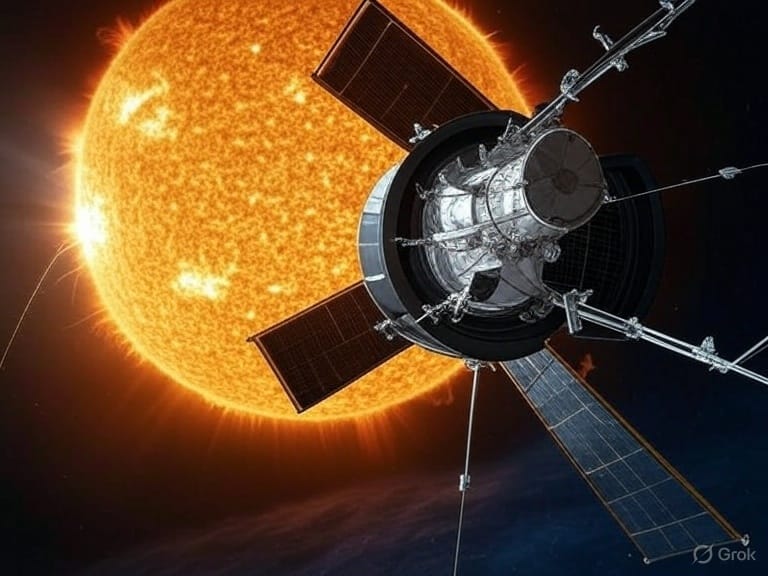- Shortlysts
- Posts
- NASA Releases Imagery from Parker Probe’s Closest Ever Flight to the Sun
NASA Releases Imagery from Parker Probe’s Closest Ever Flight to the Sun
NASA releases imagery from the Parker Probe’s closest ever fly by to the Sun.

What Happened?
During its closest ever pass by the Sun late last year, NASA’s Parker Solar Probe captured impressive new images from within the Sun’s atmosphere. ‘Parker Solar Probe has once again transported us into the dynamic atmosphere of our closest star,’ said Nicky Fox, associate administrator, Science Mission Directorate at NASA Headquarters in Washington.
Parker Solar Probe started its closest approach to the Sun on Dec. 24, 2024, flying a mere 3.8 million miles from the solar surface. As it skimmed through the Sun’s outer atmosphere, called the corona, in the days around the perihelion (the point where an object is closest to the sun), it collected data with an array of scientific instruments, including the Wide-Field Imager for Solar Probe, or WISPR.
Why it Matters
These newly released images were taken closer to the Sun than any human made object has ever been, and they are helping scientists better understand the Sun’s influence across the solar system, including events that can affect Earth. This new data will help us vastly improve our space weather predictions to ensure the safety of our astronauts and the protection of our technology here on Earth and throughout the solar system.
Crypto whales have quietly accumulated $62 million worth of a single protocol in just 72 hours.
This is calculated accumulation by the smartest money in crypto... into a protocol that processes more transactions than most banks... holds more assets than entire hedge funds... and generates more fees than 99% of DeFi platforms.
Yet... this cryptocurrency still trades for a tiny fraction of what Bitcoin costs.
The math doesn't add up.
But smart money knows something retail investors don't.
Two catalysts are about to converge:
Major tokenomics upgrade that redirects $6 million annually to holders.
Institutional partnerships that could bring trillions in traditional assets on-chain.
When these hit, the current price will look like pocket change.
According to NASA, the new WISPR images reveal the corona and solar wind, a constant stream of electrically charged particles from the Sun that rage across the solar system. The solar wind expands throughout the solar system with wide-ranging effects. Together with outbursts of material and magnetic currents from the Sun, it helps generate auroras, strip planetary atmospheres, and induce electric currents that can overwhelm power grids and affect communications at Earth.
The widespread power outages that took place in Spain early this year have been attributed to solar activity by a number of sources online. While solar flares do have the potential to cause disruptions in electrical grids, their effect tends to be global in nature. It is unlikely a solar flare or other solar activity would only cause disruptions in one geographic location, as was the case in Spain.
The Parker Probe could also help shed light on the still mysterious origins of the solar wind. ‘The big unknown has been: how is the solar wind generated, and how does it manage to escape the Sun’s immense gravitational pull?’ said Nour Rawafi, the project scientist for Parker Solar Probe at the Johns Hopkins Applied Physics Laboratory. Thanks to the close pass by the probe, scientists now have a treasure trove of new data to try to find answers.
How it Affects You
Solar activity plays a major role in shaping weather and events on earth. A better understanding of how the sun actually works could vastly improve our ability to predict solar activity, which in turn could enable advanced warning and better preparedness for solar events.